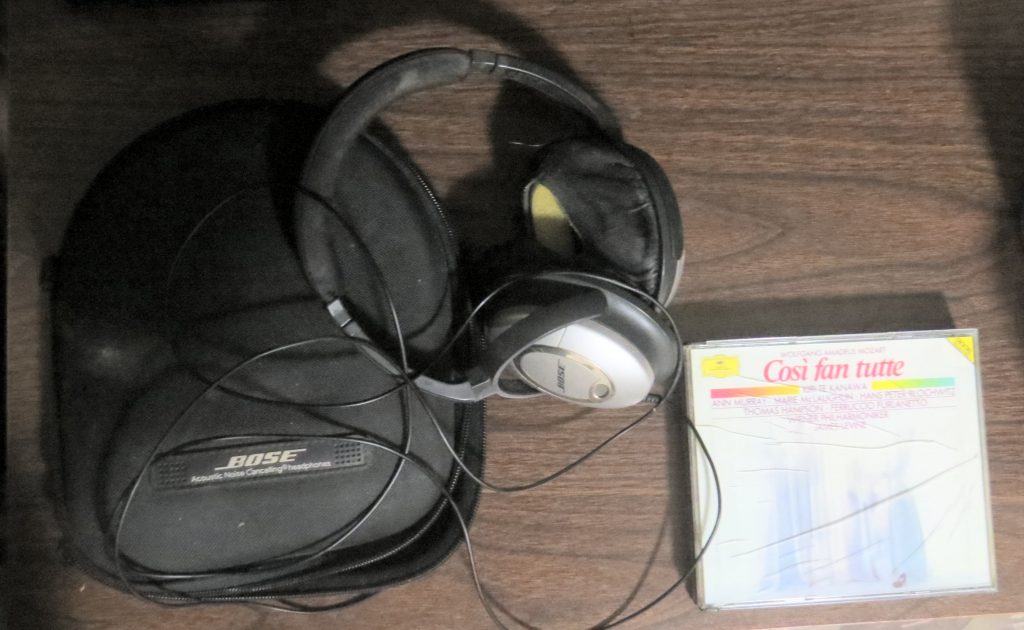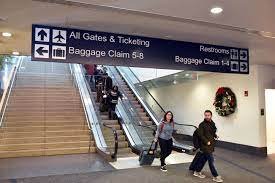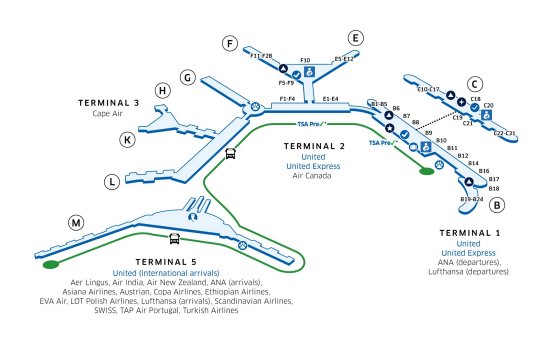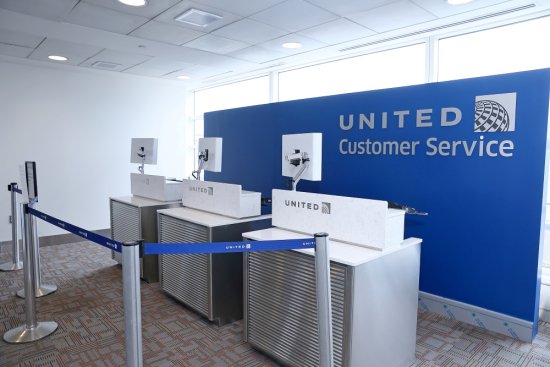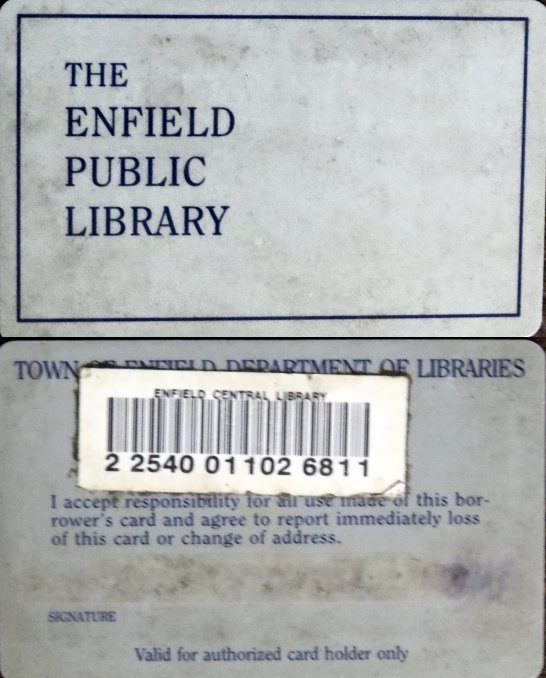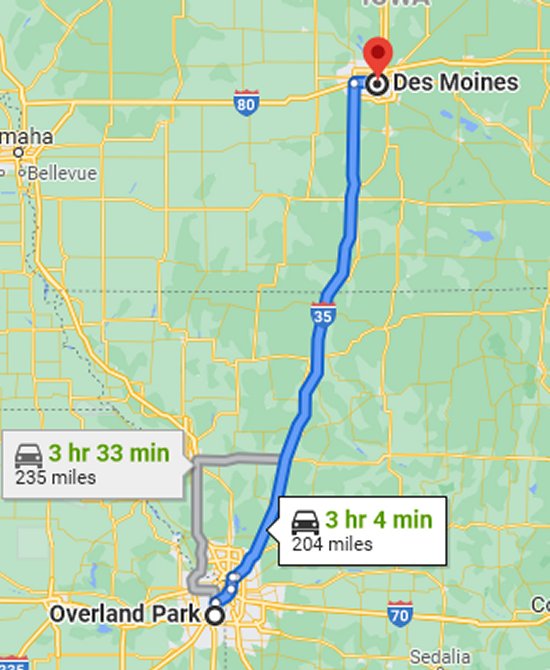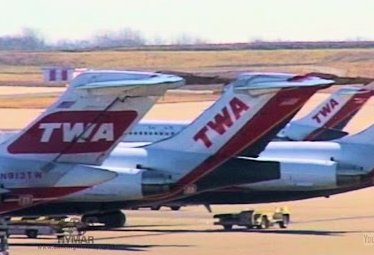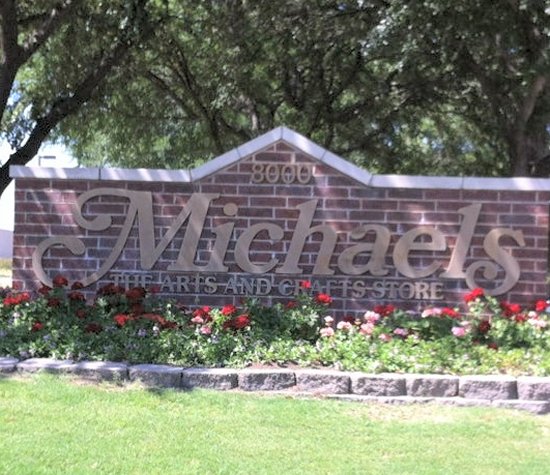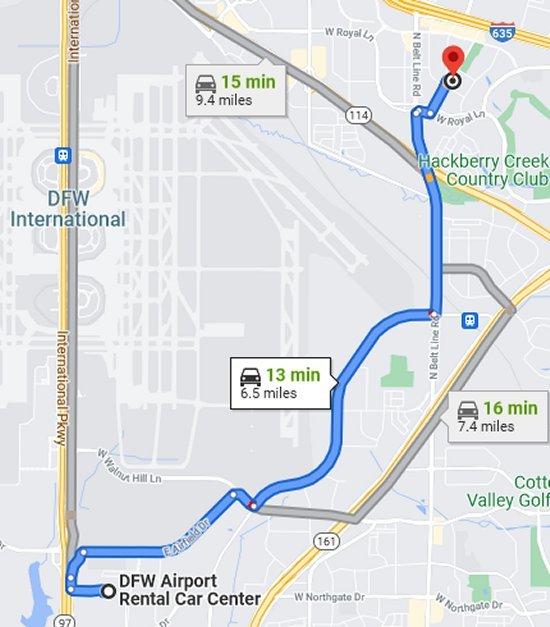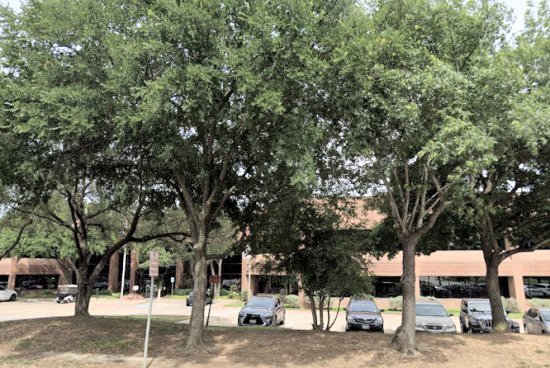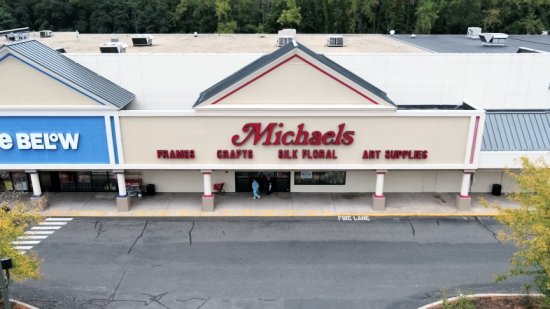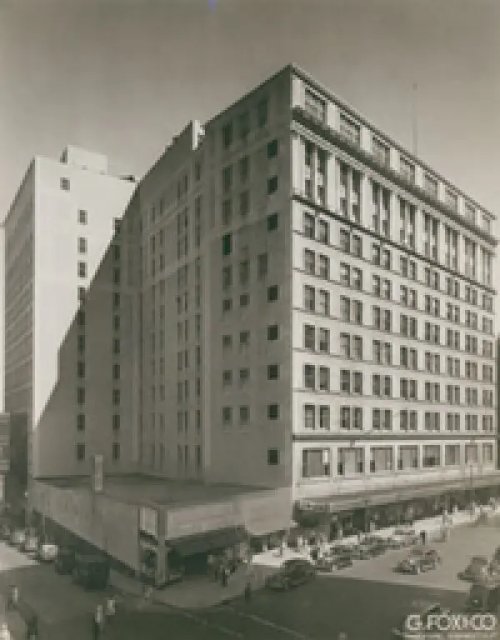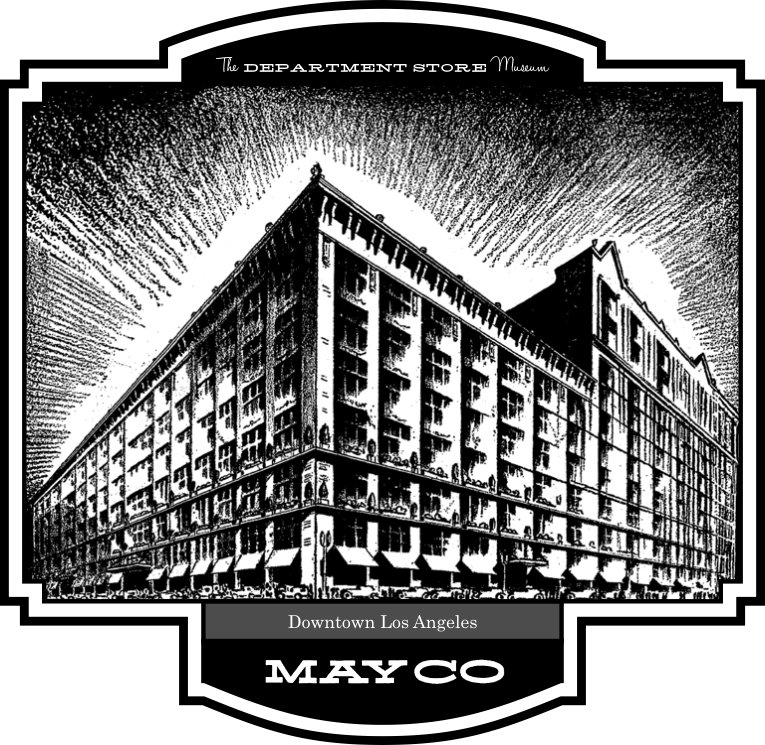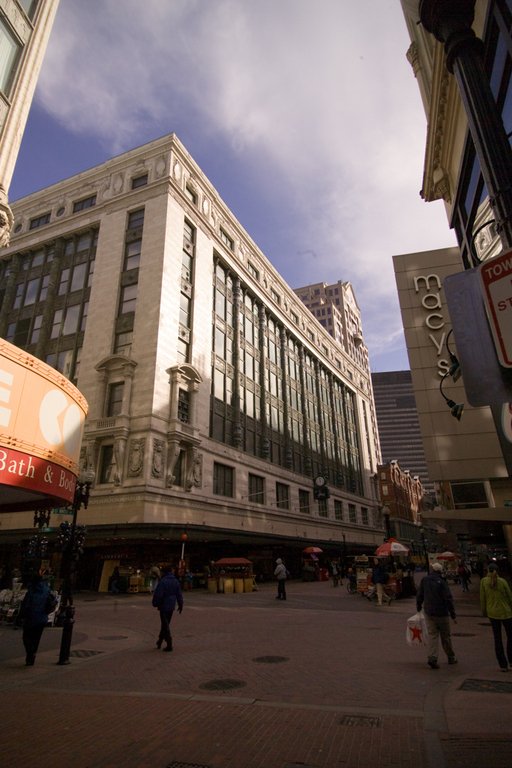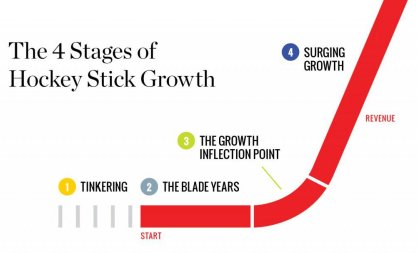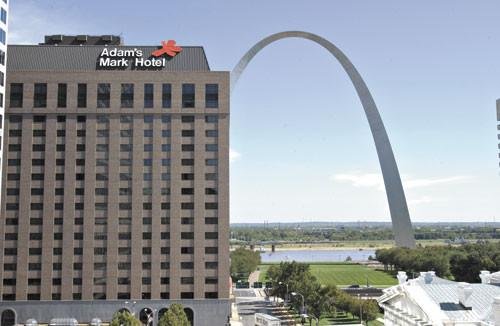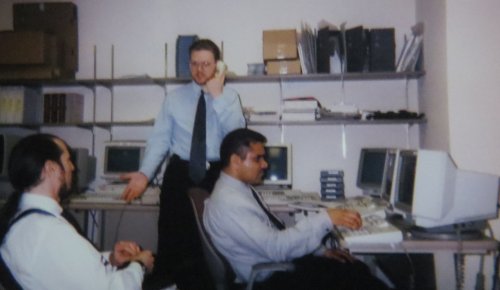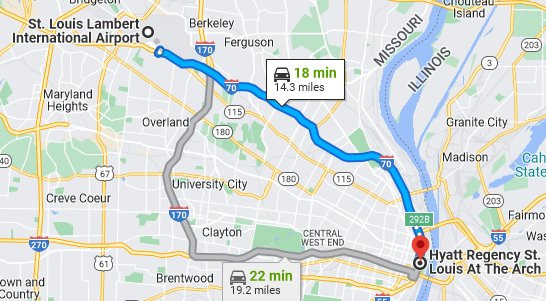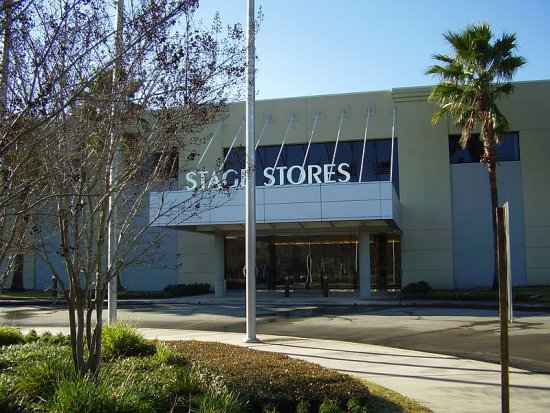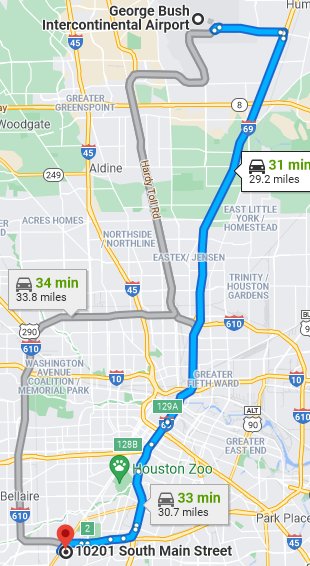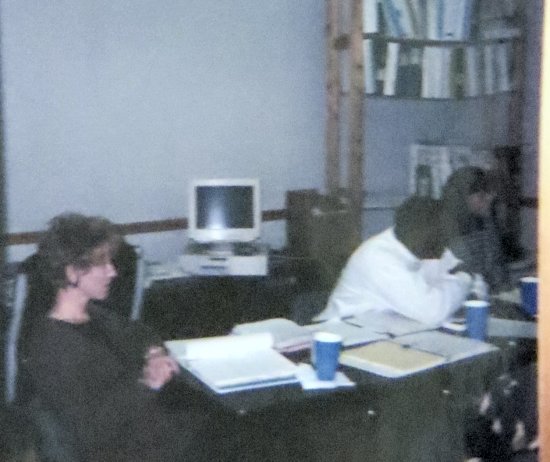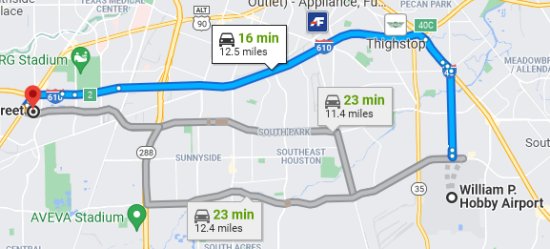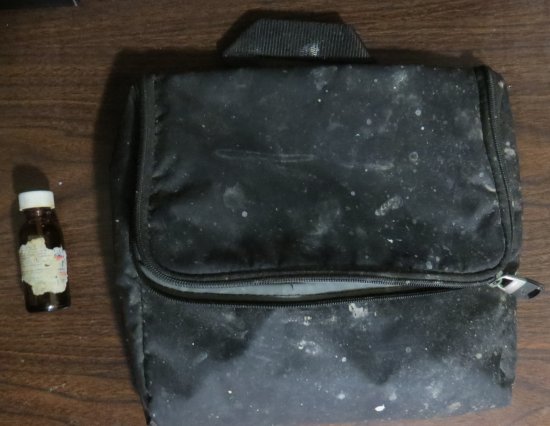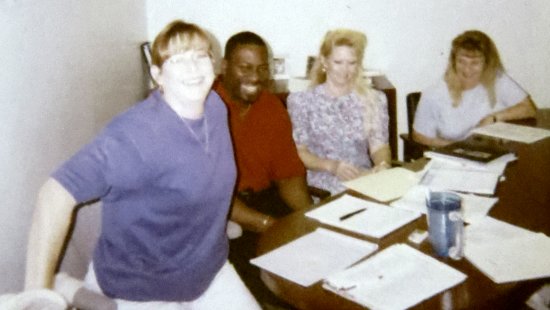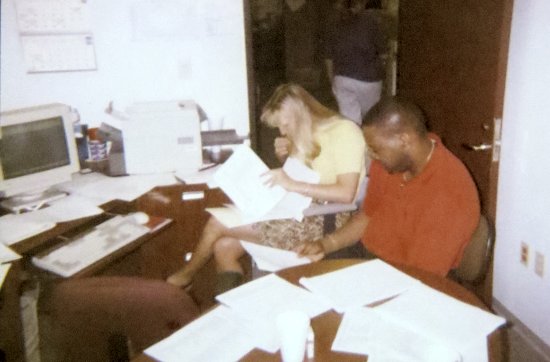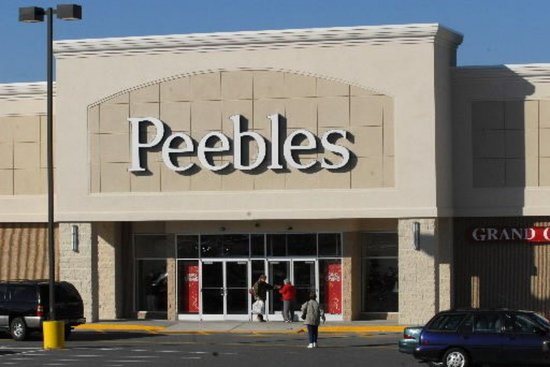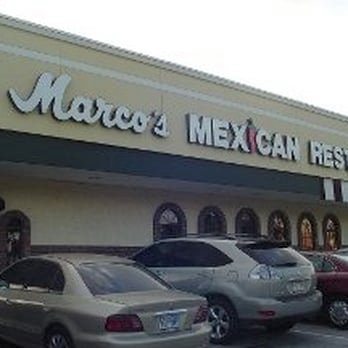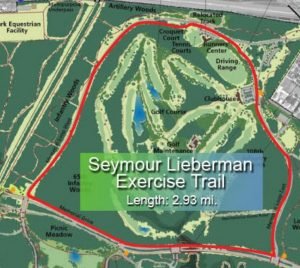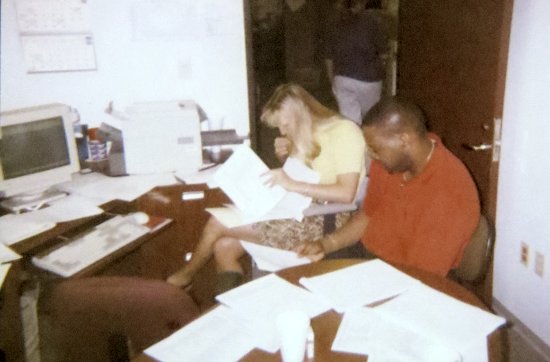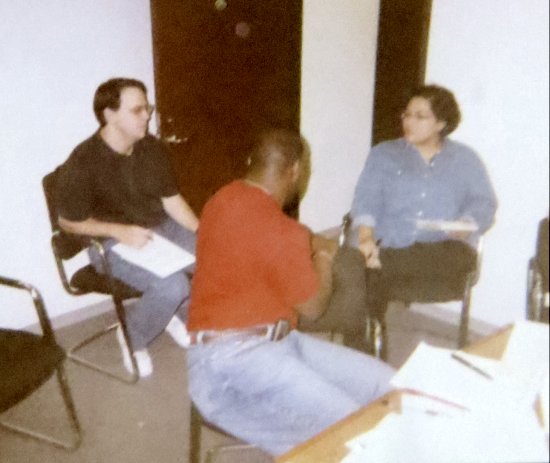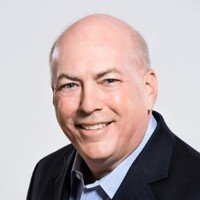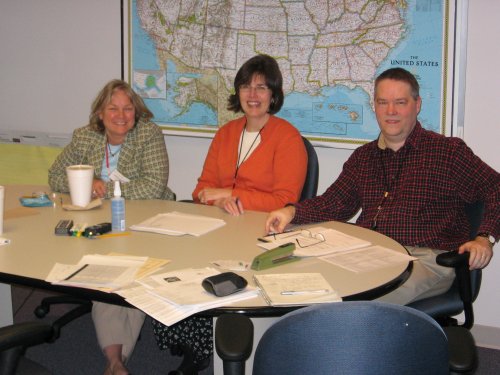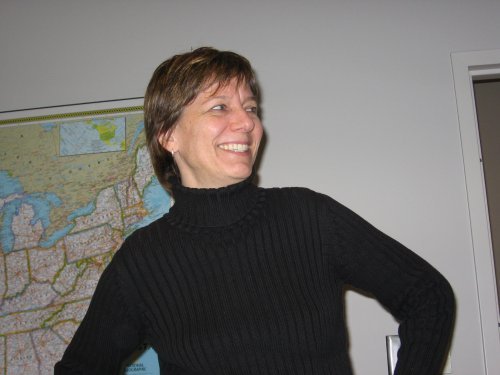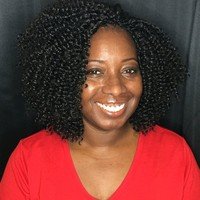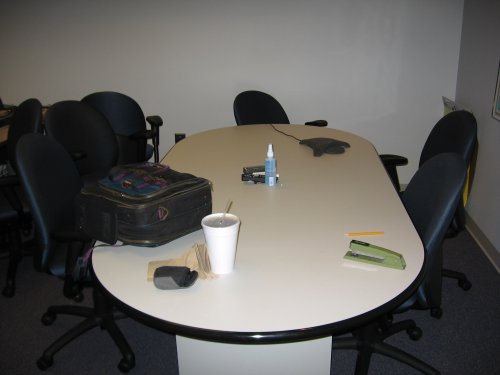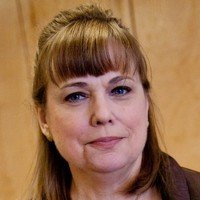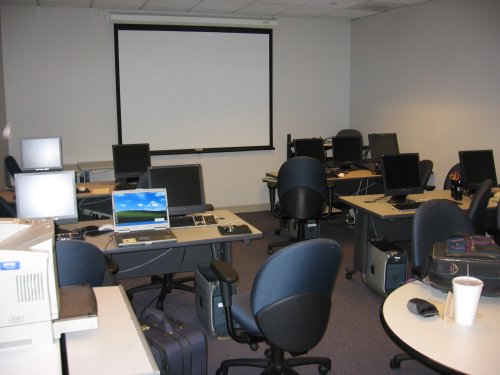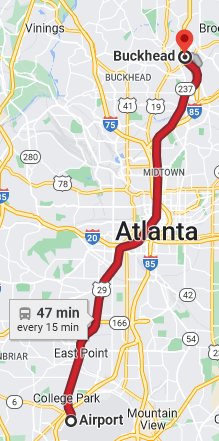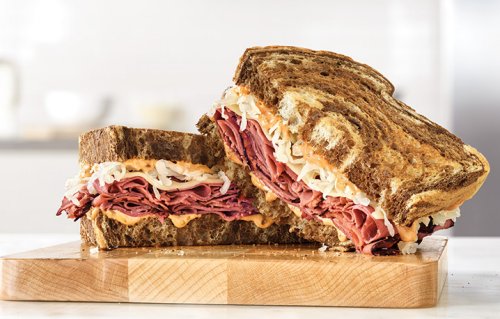Getting to the clients and returning. Continue reading

My routine: I always flew from Bradley International Airport in Windsor Locks, CT, which was usually identified on the departure boards at airports as “Hartford-Springfield” or BDL. We were fortunate in that almost every major airline had a presence at Bradley. The last to arrive was Southwest, which began its service at Bradley in November 1999.
I usually took one of the first flights in the morning, often around 6:00. At first Sue drove me to the airport and picked me up, but this became tiresome for me. I soon elected instead to park at Executive Valet Parking, the only lot that was north of the airport. It was easier on both of us.
The people who worked the early morning shift at Executive came to know me pretty well. The driver was usually an extremely friendly and loquacious guy named Larry. His style was too much for me at that early hour. I mean, it wasn’t even 6:00 yet. I was never in the mood for chitchat. Vacationers probably appreciated his approach more than business travelers.
The lady at the desk knew me well enough that I did not even need to show my frequent-parker card when I checked in. She even knew what I drove.
On every trip I brought exactly one suitcase and one briefcase that was large enough to hold my laptop. For several years my suitcase was a large bright blue fabric one with wheels. It was large enough to hold my pillow. I always had a hard time getting to sleep after a stressful excessively caffeinated day dealing with problems or requests at the client’s office. Having a familiar pillow helped. The suitcase’s bright color also made it easy to spot on the luggage belt, and the design made it light. I only got rid of it when the zipper broke.
When I arrived at the terminal, I checked in at the ticket counter. In the nineties I flew enough that I could use the express lane at Delta or American. Later, of course, the airlines installed kiosks that made the check-in process much easier.
Security was a breeze before 9/11/2001 (described here). Even during the busiest times (early in the morning and around 6 PM), it seldom took more than a minute or two. Since the employees worked (directly or indirectly) for the airlines, they were always courteous and tried to make sure that passengers arrived at their gate expeditiously. After 9/11 it was a good idea to plan for an excruciating period of at least twenty minutes.
In the first few years of my flying days Bradley had two terminals. Terminal B housed American Airlines and a few small carriers that I never used. Later this terminal was demolished and Terminal A was greatly expanded with two long “concourses” that connected to the central area.
In the mornings I usually bought a sausage biscuit with egg sandwich at McDonald’s in the airport. I also purchased a large coffee even though the restaurant at the airport did not participate in the long-standing promotion of “$1 for any size coffee” available at most McD’s in those days. If I was in a hurry I brought the breakfast bag onto the plane.
If I had a lot of time, I would try to find a place to sit near an electric outlet. Most airports were not designed for the electronics age. In the nineties almost no one brought a computer onto an airplane, and cell phones were even rarer. Furthermore most of the devices in those days could not hold a charge for more than a couple of hours. Consequently, as the use of electronics grew, those few seats near electrical outlet were in great demand. I knew the location of most of the outlets at BDL.
An inviolate rule was to use a men’s room in the airport before every flight. The restrooms on airplanes were not pleasant, and waiting in line in the aisle when you had to go was very annoying.
I tried to reserve window seats. I liked to look out and try to identify cities. Of course, no one wanted a middle seat. When I sat on the aisle someone always seemed to hit my elbow. I usually tried to get on the port side. If no one sat in the middle I could stretch out my right leg under the middle seat in front of me.
I always brought my computer, my Bose headphones, my CD player, several magazines, and at least one book. Some flights showed old television shows on a screen; I never watched or got a headset. I played opera music on my CD or the computer while the plane was in flight. I also played music in my hotel room, while I was running, and especially during the periods between flights in noisy airports. On one of my last trips I had been listening to Mozart’s Così fan tutte when it was time to board the plane. I left under my seat in the waiting area the CD player that contained the opera’s third CD. I never got the player back or bought a replacement for the CD.
I almost never slept on the flights out to the client’s location, but I regularly dozed on the return flights even when someone occupied the middle seat. I found the most comfortable position in close quarters was to lean my head against the little pillow that was provided to my seat braced against the window or side of the plane.
I never put anything in the overhead compartments. My briefcase, which had all my electronics and other diversions, was under the seat in front of me. If the plane was crowded, it was sometimes difficult to extract the stuff that I wanted. If I had an overcoat or a jacket, I used it as a lap rug.
Most of the time my return flights landed late, sometimes very later. I tried to get to the baggage area before most of the other passengers in order to occupy a position near the beginning of the belt. I knew which direction all the belts ran. No airline ever failed to deliver my luggage1 on a return trip. Nevertheless, by the time that my bag arrived—no matter how well the trip had gone—I was always angry at everyone and everything. For me air travel for business was inherently stressful.
There were a couple of banks of phones in the baggage area. Each parking lot and hotel had a direct line. I just picked up the phone and read the number on the ticket that I had been given when I checked in at Executive and told them which airline I had been on. Within a few minutes (usually) the shuttle bus would arrive. Executive would almost always have my car warmed up by the time that the bus reached the lot. Executive charged the credit card that I had on file there. The receipt would be on the seat of the car. My drives home were always uneventful.
I recognized quite a few celebrities while I was in airports or on airplanes going to or from AdDept clients. My spottings are documented here.
Weather and other close calls
In the winter I tried to avoid scheduling flights that required stops in Chicago, Detroit, or Minneapolis. Nevertheless, on quite a few occasions I ended up missing my connecting flight back to Hartford. Since my return trips were almost always in the evening, on most occasions there were no other flights that I could take. This was a nuisance, but after a while I came to appreciate that the inconvenience was just part of the aggravation inherent to traveling for business. The airline always found a seat for me on a flight in the morning and put me up at a nearby hotel for the night. I can only remember one bizarre exception. I have described it here.
Once, however, the disruptive weather had subsided in Chicago long before my United flight from Des Moines touched down at O’Hare. Earlier that day the winds in the Windy City had exceeded fifty miles-per-hour, and O’Hare had been closed for a short period. It was about 8:30 PM when my flight effected its landing there, and my next flight was not scheduled to leave until 10:00. So, even though United connections in O’Hare could require very long walks, I was not very worried about arriving at my gate in time to board my flight to Hartford.
I did not account for what happened next. The plane usually taxied around for a few minutes and then pull into the designated gate. Not this time. The pilot parked it on the tarmac out of the way of the other planes. He then announced that there was no gate available for our flight. He did not explain why; he merely stated that he had been ordered to park where he did. Every few minutes he would make an announcement on the intercom, but fifty minutes elapsed before we finally reached the gate.
At that point there was almost no chance that my checked bag would be transported to my connecting flight. That failure had happened to me a few times. The airline just delivered it to my house later in the day. The big question was whether I could make it to the gate before the plane departed. I knew that it would not be easy as soon as I saw that my flight to Hartford was in a different terminal. On the other hand I was in the best shape of my life. Even carrying my quite heaby briefcase I rated that I had a pretty good chance.
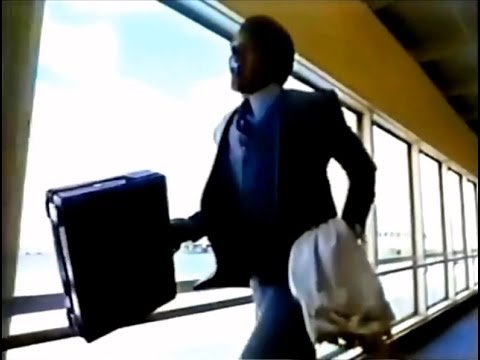
In fact, I did reach the gate ten minutes before the scheduled departure time. I was dismayed to see that the door was already closed. I went up to the desk with my ticket to demand that the two female agents let me on the plane. I was, of course, out of breath. One of the ladies told me to calm down. She warned me that I might have a heart attack.
“Don’t be ridiculous,” I assured them. “I am a runner. In a minute or two I won’t even be breathing hard.” This was true.
They refused to open the door. That was bad enough, but they then also refused to authorize me to stay overnight at United’s expense. They claimed that it was weather-related and therefore not the company’s fault.
I explained that my flight had landed on time, but it then parked out on the tarmac for almost an hour because United did not have enough gates. The bad weather had ceased long before this happened. The agents were intractable. I have seldom been so angry. I might have said something inappropriate.
Fortunately for me, United had plenty of customer service desks in O’Hare, and they stayed open very late. I walked over to one and explained the situation to the clerk. He told me that he did not understand why the ladies would not give me vouchers for a hotel room and breakfast.
I understood the reason very well. They were planning to leave ten minutes early, and they were already packed up. Dealing with me might actually have required them to stay another ten or even fifteen minutes.
The customer service guy issued the vouchers without hesitation. I stayed at a hotel and arrived in Hartford the next morning on the same plane that had my luggage.
Tornado
I cannot remember even one occasion in which weather prevented me from arriving at a client’s office by the scheduled time. The one time that my plane faced really serious weather was when I was flying to Des Moines in the late afternoon. A serious tornado was approaching Des Moines from the southwest at about the same time that my plane was approaching from the east. The plane was forced to land in land in a much smaller airport in Cedar Rapids. Our aircraft and crew were going to spend the night in Cedar Rapids. The flight to Des Moines would resume in the morning. So, the luggage stayed on the plane. There were no flights available to Des Moines on the evening that we arrived.
I needed to be at the client’s2 offices at the start of business in the morning. I decided to rent a car and drive to Des Moines. I usually patronized Avis, but Avis had no office in the Cedar Rapids airport. So, I went to the Hertz counter and rented a car. The agent assured me that I could return it at the airport in Des Moines. He also gave me a map and indicated the route. This was Iowa. You can always get from one place to another with only a few turns.
I was not too worried about the tornado. Airplanes cruise at about 30,000 feet. At that altitude a tornado is quite wide. The chances of it engulfing an airplane are good. I was driving at an altitude of five feet or less. The swath of a tornado when it touches down—and many never touch down—is usually not very wide. My chances in the car were much better than ours in the plane.
In fact, I encountered some wind and rain, but not enough to bother me or my vehicle much. I made it to my hotel not much later than I would have if the flight had continued in Des Moines. The problem was that I was wearing shorts, sneakers, and a Bob Dylan tee shirt. I had everything that I needed for work in my briefcase, but all my clothes were still on the airplane in Cedar Rapids.
In the morning I checked the phone book in my hotel room. I discovered a Walmart within a couple of miles of the hotel. I drove there at about 8:00 and purchased a pair of pants and a shirt. They were not exactly elegant, but they would pass for one day. The people would just need to put up with my inappropriate footwear.
The advertising director told me that it would have been fine to come in my tee shirt and shorts, but he was not familiar with the condition of that outfit.
The only time that I felt a little frightened on a business trip involved a landing at National Airport in Washington, DC. I had heard that the runways at the airport were shorter3 than those at other major airports, and the pilots did seem to apply the brakes rather hard as soon as they touched the runway. On this one occasion, however, the US Airways pilot did not hit the brakes at all. The plane did not roll on the runway; it bounced. The pilot then immediately placed the aircraft in takeoff mode. The plane cleared the far end of the runway, rose steadily, circled back around, and eventually landed.
The pilot never explained what had happened, and the extra circuit only cost us a few minutes. Maybe we were coming in too “hot’; maybe something was on the runway. Who knows?
Food
Most of my flights occurred before 9/11. The longer flights offered meals in those days; on the shorter ones snacks were served. If the meal had more than one choice, my initial strategy was to take the one that sounded the most appetizing. After several disappointments I reversed course and chose the one that seemed less appetizing. That seemed to work better.
In the morning I ordered tomato juice with ice and black coffee. At other times I chose Diet Cokes (or Pepsi)—with the can if they would let me. I never ordered an alcoholic beverage in coach, but I usually had one Scotch on the rocks if I was in first class and on my way back to Hartford.
If the flight offered only snacks, my choices were—in order—potato chips, peanuts, and Biscoff cookies. I always passed on pretzels and anything that I had never heard of.
I actually liked the food at restaurants at a few airports. I liked the babyback ribs at the Chili’s in Concourse F in Atlanta. The Usinger’s brats at the Milwaukee airport were outstanding. The Italian beef sandwiches in the American Airlines section of O’Hare were delicious. I frequented a Mexican cantina at DFW. The Taco Bell in the Baltimore airport sold beefy burritos for a while.
I found something tolerable at most of the other airports. Chicken wraps of some kind were usually reliable. I avoided fried foods and tried to eat some fruit. I usually enjoyed Chinese food, but I had bad luck with it at airports.
Puddle-jumpers
Most of my flights were at least an hour long, and I usually rode on full-sized jets. I did have a few memorable trips on smaller planes.
I flew on a small plane from Fort Meyers to Naples when I was asked to make a presentation to the Frederick Atkins Group. That flight was uneventful. I also once took the very short flight from Minneapolis to St. Cloud, MN. That flight hardly even seemed to get off of the ground. On subsequent trips to Herberger’s I rented a car in Minneapolis. The short flight was from LA to Fresno provided me with my first view of both LA smog and Bakersfield.
One short trip was momentous, not for me, but for my flying companion, Doug Pease. The Continental flight from Bradley to Newark was pretty choppy. I was gazing out the window the whole time, but out of the corner of my eye I saw Doug reach for the air sickness bag5. After we landed he nonchalantly threw the bag in a trash can. I asked him, “Don’t you want to keep that as a souvenir?”
Miscellaneous: For some strange reason on at least three occasions a woman with a young child waiting to board a flight approached me. Each woman asked if she could entrust the kid to me while she went to the ladies’ room (or maybe to the bar for a quick stiff one). Nothing happened.
On another occasion I sat next to a boy flying alone from Washington. I don’t remember the destination. The weather was terrible when we took off, and we bounced around quite a bit. It dd not seem to bother him at all. He had books and toys with him and was a perfect little gentleman the entire time. I had the impression that he had flown as much as I had.
Once on a trip from Bradley to, if I recall correctly, Chicago I sat in the very last row next to another computer programmer. We both ran small software companies. Although he worked on Macintoshes, and our clients used IBM mini-computers, we discovered that we had experienced similar frustrations in trying to get our businesses off the ground. We were lucky to find a niche market that lasted just long enough.I wonder how his turned out.
I could just imagine the agents at the ticket counter saying, “Oh, God, here’s another one. Put him in the back row with that other geek.”
My trip to Portland OR, on February 21, had several strange features. This is from my notes:
I drove to the airport Sunday evening and discovered that there was no place to park. I went to six parking lots. They were all full. I ended up parking in short-term parking. It costs $20 per day. Although this is outrageous, it will hardly make a dent in the cost of this trip. My plane from Hartford was totally full (most of the passengers appeared to be high school-aged). I assumed that at least some people would miss the plane because they couldn’t find a place to park, but I was wrong. From now on I guess I have to call Executive Valet Parking before I leave. If they don’t have any room, I will just leave my car at 7B and call a cab. It’s bound to be less than $140.
I wonder where all the people parked. Bradley has closed off half of the short-term parking and all of the B lot.
By contrast, the plane to Portland had only about forty or fifty people on it. …
This is a first. The crew on the flight from Cincinnati to Portland also was on the flight from Hartford to Cincinnati. Different plane; different gate; same people.
To get from the airport to the parking lot after a trip I had to call Executive. Someone ordinarily answered on the first ring. One night no one answered the phone. I hung up, waited a few minutes, and called again. The third time that I called it rang ten or fifteen times before a breathless woman answered. She took my information and said that she would be there as soon as she could. About thirty minutes later the bus arrived, and she was driving. She explained that three or four people ordinarily worked the night shift, but the others did not show up that evening. So, she had to answer the phone, go out in the lot to find the cars, drive them to the office area, and then drive the bus to the airport to pick up the customers at three different locations.
Four or five of us were on the bus at the same time. No one gave her any grief. Nothing similar ever happened again. I stuck with Executive, but I imagine that the company lost a few customers that evening.
If I could arrange it, I would work in a visit to my parents on the way to a client. This was often feasible for trips to Texas or California. Direct flights to DFW, Houston, and LA were available from Kansas City’s airport.
I arrived at the ticket counter at Bradley for one of those KC trips, and, to my dismay, I could not find my driver’s license. The agent would not give me my ticket without proof that I was the person who had purchased it. They would not accept my many credit cards as proof of identity. In the end they accepted my library card from the Enfield Public Library. They said that it would suffice because it was issued by a government organization. Yes, but it did not have my name on it anywhere! Isn’t the purpose of a piece of identification to show that the name on the card matches the name on the ticket?
Needless to say, I did not object. However, I knew that this acceptance only deferred my day of reckoning for a couple of days. I would certainly need to produce real ID to fly from KC to LA.
Delaying worrying about the problem was a good approach. My driver’s license was actually resting comfortably in my shirt pocket the entire time. I had placed it there that very morning so that I would not need to dig through my wallet to find my license. This was a good example of being “too clever by half.”
Luggage
A different trip that included a stop in Kansas City resulted in the most frantic half hour that I ever spent in an airport. My final destination was Des Moines. Because there were no direct flights to Des Moines from KC, I decided to rent a car in KC and drive to Des Moines. I would arrive sooner than if I flew, and I could set my own schedule. I must have played golf with my dad on that trip. I remember that I had brought my golf clubs with me.
At the end of the training/support/research session in Des Moines I flew back to Hartford on TWA. This meant that I had to stop in St. Louis. By coincidence the flight to St. Louis continued on to Hartford. This was a rare occurrence. I almost always needed to change planes when we reached the hub airport.4
At some point after I boarded the flight to St. Louis I noticed an anomaly on the baggage check that had been stapled to the envelope holding my ticket. Although the destination on the ticket was Hartford, the bags were designated for St. Louis. I pressed the call button for the flight attendant. When she arrived I explained the problem. She conferred with other crew members and then advised me to go to baggage claim in St. Louis (leaving my briefcase on the plan), retrieve my checked luggage, bring them up to the ticket counter, check the bags again, go through security again, walk to the gate, and reboard the plane.
I did all that, but it was exhausting. I had to drag my suitcase and my golf clubs up the stairs to the ticket counter. Fortunately, I found a short line there, and the trip back through security was not much of an issue before 9/11. I made it to the gate with perhaps five minutes to spare, but I was completely spent. The rest of the trip was blessedly uneventful.
On quite a few flights a crew member attempted to say something humorous over the airplane’s intercom. I only remember one who was really able to pull it off. The flight was on United from Bradley to Chicago. My recollection is that it was in the evening. The head flight attendant was absolutely hilarious. Almost all of the people in the cabin—who usually pay little attention to announcements—were in stitches. I only remember one line. It occurred when she was advising us to fasten our seat belts to prepare for the landing. She began with, “The captain reports that he has found an airport…”
1. On one flight to Pittsburgh, at the time a hub for US Airways. I could not find my big blue bag on the conveyor belt. I went to the agent. She found it for me. She said that it was the only piece of luggage on my flight that was not directed to another flight.
2. The client was Younkers, a chain of department stores based in downtown Des Moines. Much more about the AdDept installation at Younkers is posted here.
3. In fact, the longest runway at National Airport was less than half the length of the runways at the other major airport in the Washington area. It was also much shorter than the runways at Bradley.
4. I can remember only one other time that my flight continued to my final destination after a stop at a hub. It was a Continental flight from Bradley through Cleveland to Houston. I was the only passenger who stayed on the plane, but the crew for the second leg was the same. This was in the days that the airlines served food. The flight attendant apologized to me because the meal on the second leg was the same as she had served me on the flight from Hartford. I ate both meals. I have almost never turned down free food.
5. While I was working at TSI I never got sick on an airplane. However, on our vacation in Tanzania in 2015 I had an absolutely awful experience on the first leg of our journey from Serengeti to Katavi. The tale of woe is told here.




